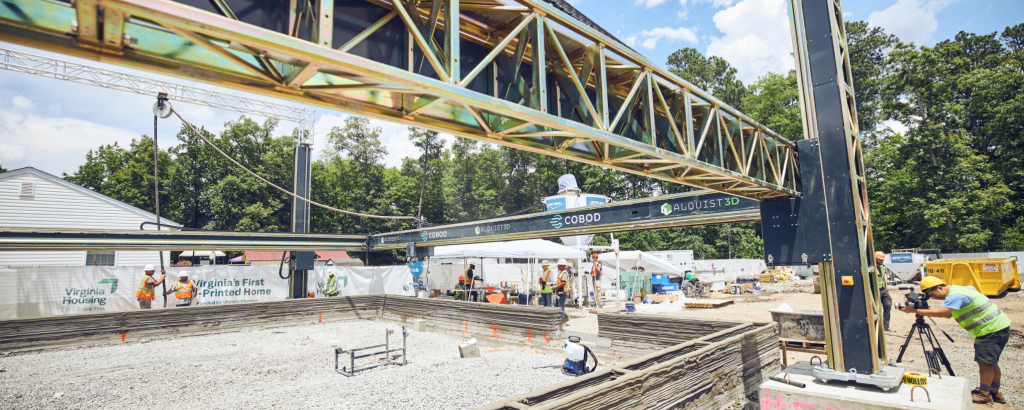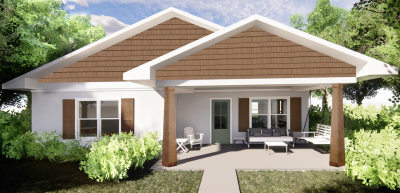Blog Contributed by Zack Manheimer
The Problem With Housing
Housing is a fundamental need, yet most Americans struggle every day to afford their homes. For decades, the price to build has not equaled the price to sell. Our country must find a way to either pay its workers more as costs increase for housing materials, or we must drop the cost of building as a whole. Or, ideally, both. As housing affordability continues to be out of control, innovation is inevitable. Fortunately, we need only to look at other countries to learn from their technology in this field.
3D printed structures have been created in Europe, Asia, and the Middle East for the past 5 years, and America is now catching up. I believe we will surpass these markets as the technology continues to evolve.
The pandemic has exacerbated this problem, driving the costs of building materials to historic highs, and increasing the average home price above $320,000, pricing out most Americans. In addition, every time a home price increases by $1,000, we are displacing over 150,000 American families. This circle is unsustainable.
We are now in the surreal period of looking at what, if anything, could be a positive coming from the past 16 months. One thing is for sure, the cost of doing business in major metros was unsustainable. Corporate city centers caught unprepared now face the daunting task of re-imagining their office towers, and rural communities, equally unprepared, must act urgently to compete in the urban flight/tele-work future.
American Migration
We are tracking 7-15% of all workforces from urban metros have migrated out to suburban and rural communities, and the trends show an average loss of 15% of all major urban workforce to smaller communities by the end of 2023. This presents a major opportunity for rural communities to wave their hands in the air and recruit/retain new generations to their communities. West Virginia is the latest state to incentivize remote workers to move there with cash. Though, I’d like to see a state do this and offer cash assistance for local entrepreneurs and residents in addition. To do this, of course, we need houses to live in.
The Opportunity
3D printing a home out of concrete (where all the walls are concrete, the rest of the home is built traditionally) is one way to use technology to drop the cost of housing. New technology like 3D can help drop the costs of home construction by lowering the time it takes to build, the labor necessary, and the lower cost of materials. Right now, we know that we can drop the cost of a home at least 10%, with a goal of 30% in the coming years as we introduce new building materials, technology, and processes.
In addition to making a home less expensive to purchase, we must also lower the costs to operate a home. According to a new study conducted by our partners at Virginia Tech University, Alquist 3D homes are thermally broken, meaning we can drop the cost of utilities versus a traditional stick built home by at least 50%. Additionally, Alquist has little to no waste on site, further lowering our carbon footprint. That said, concrete is not the best environmental material, and research is underway for a carbon reducing matter that gets us closer to net zero.
The Goal
3D printing is the future of construction. The pros: lower cost, less carbon pollution, faster constructed structures. The cons: human jobs are being replaced by robots.
This has long been the concern of science fiction enthusiasts, but we are able to demonstrate how more jobs are created due to this advancement in technology.*
Alquist’s goals are not to disrupt the construction industry, but to advance it. In order for this to be successful, we must have robust workforce development, and build out a collaborative community to share best practices. 3D technology can excite and attract a whole new generation to enter the construction industry through community colleges and vocational schools, and we aim to start that next year. This technology needs to normalize around the country, which means we must improve the process, and get more people/companies learning the craft and printing homes.
The future of home building and ownership is not bleak, but exciting and innovative.
*Alquist is a character in the 1920 satirical play R.U.R. (Rossum's Universal Robots) by the Czech playwright Karel Čapek. R.U.R. was the first piece of literature to coin the term "Robot". In the play, "robots" are invented to speed up Rossum's manufacturing facility. Over time the robots take on human emotion and revolt over their conditions, leading to an epic battle of robot vs. human. Alquist, the main engineer, is the only character in the story who believes that humans and robots can co-exist peacefully. He is spared by the robots and charged with forging ahead a new robot/human peace.
 About the author: Zack Mannheimer is founder and CEO of Alquist, a 3D printing construction company that just completed its second home print. The company aims to decrease the cost of homes to help solve the housing crisis. Founded in 2020, Alquist has invested more than four years of research into 3D printing technology, collaborating with 3D printer manufacturer COBOD (based in Copenhagen, DK) and Alquist’s partner company, Atlas Community Studios. Zack has determined that the number one need in nearly every rural community is housing, which is why Alquist plans to work in those communities throughout the US to develop new single family, multifamily, mixed-use, and senior living units.
About the author: Zack Mannheimer is founder and CEO of Alquist, a 3D printing construction company that just completed its second home print. The company aims to decrease the cost of homes to help solve the housing crisis. Founded in 2020, Alquist has invested more than four years of research into 3D printing technology, collaborating with 3D printer manufacturer COBOD (based in Copenhagen, DK) and Alquist’s partner company, Atlas Community Studios. Zack has determined that the number one need in nearly every rural community is housing, which is why Alquist plans to work in those communities throughout the US to develop new single family, multifamily, mixed-use, and senior living units.







